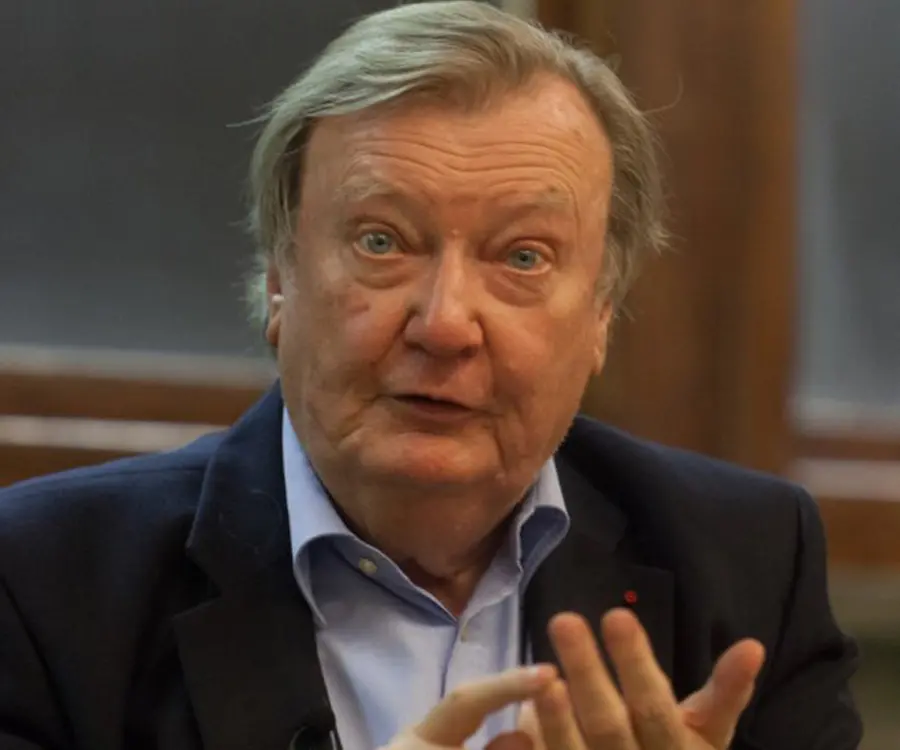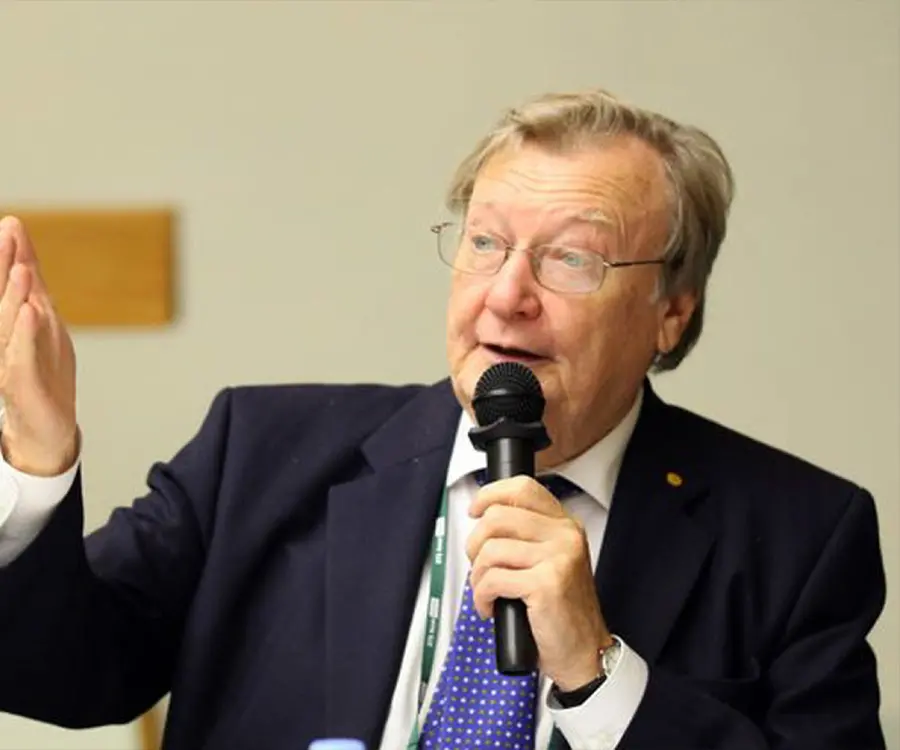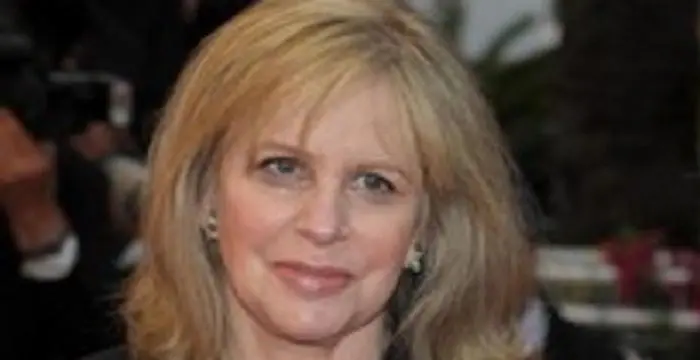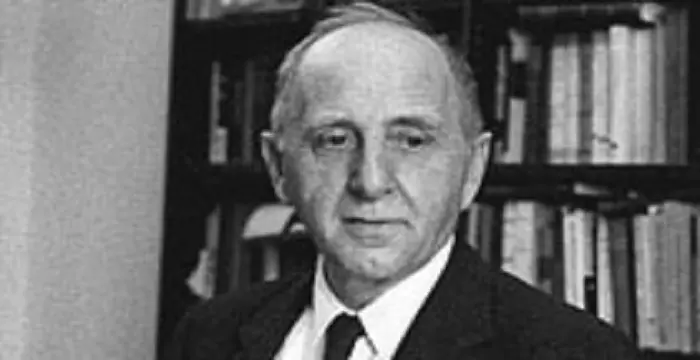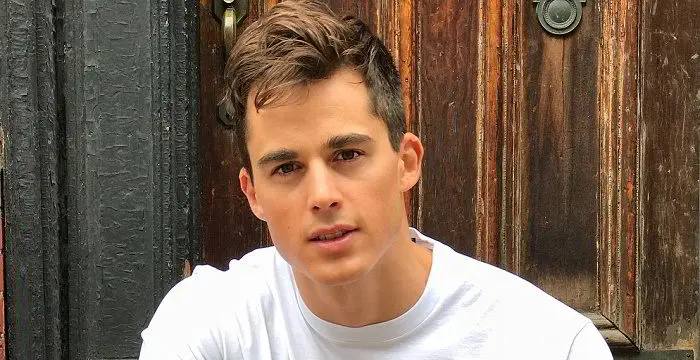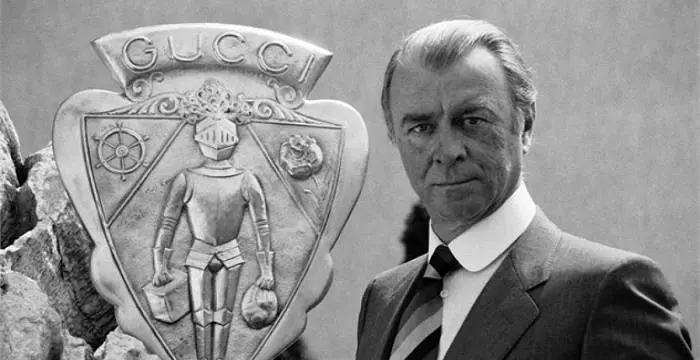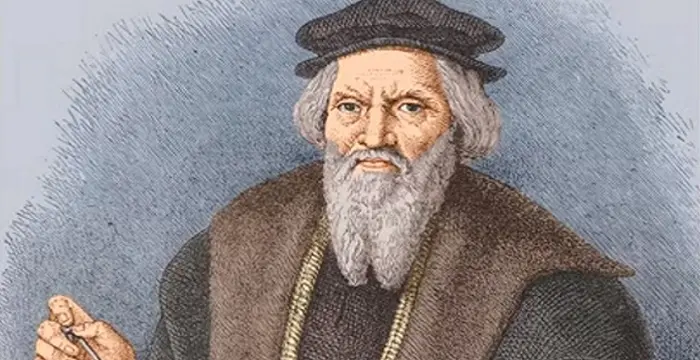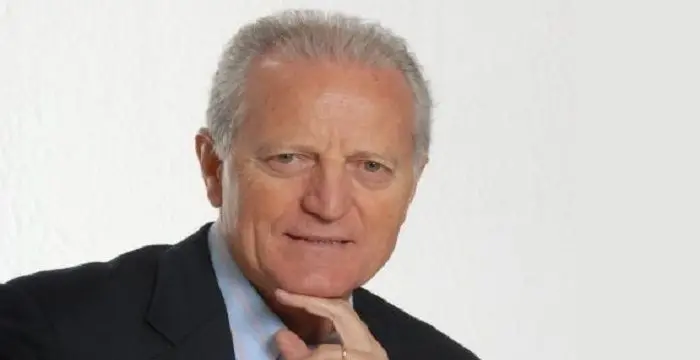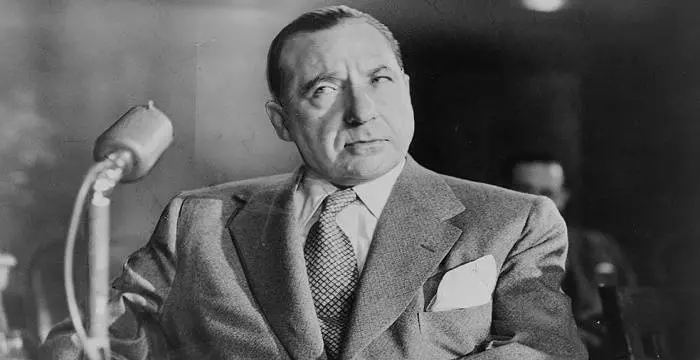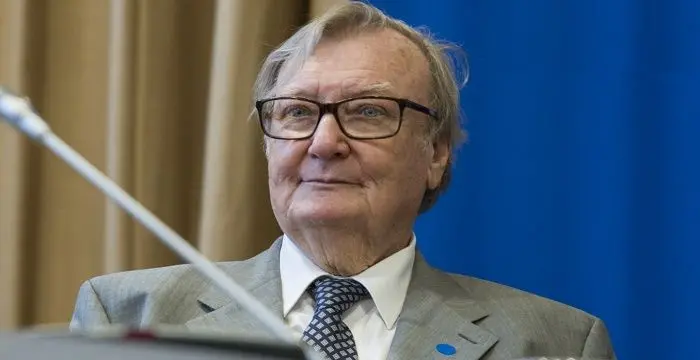
Carlo Rubbia - Scientists, Timeline and Childhood
Carlo Rubbia's Personal Details
Carlo Rubbia is an Italian physicist
| Information | Detail |
|---|---|
| Birthday | March 31, 1934 |
| Nationality | Italian |
| Famous | Columbia University, Scientists, Physicists |
| Spouses | Marisa |
| Childrens | Andre, Laura |
| Universities |
|
| Notable Alumnis |
|
| Discoveries / Inventions |
|
| Birth Place | Gorizia, Friuli-Venezia Giulia, Italy |
| Gender | Male |
| Father | Silvio Rubbia |
| Mother | Bice |
| Sun Sign | Aries |
| Born in | Gorizia, Friuli-Venezia Giulia, Italy |
| Famous as | Physicist |
// Famous Physicists
Henry Cavendish
Henry Cavendish was a theoretical chemist and physicist, renowned for discovery of hydrogen and calculation of the mass of earth. To know more about his childhood, profile, timeline and career read on
Walter Kohn
Nobel Laureate Walter Kohn was an Austrian-born American theoretical chemist and physicist. Check out this biography to know about his childhood, life, achievements, works & timeline.
Nikola Tesla
Nikola Tesla was a Serbian-American inventor, best known for his development of alternating current electrical systems. This biography of Nikola Tesla provides detailed information about his childhood, life, achievements, works & timeline.
Carlo Rubbia's photo
Who is Carlo Rubbia?
Carlo Rubbia is an Italian physicist, who has been one of the most important figures in the world of particle physics for several decades. He shared the Nobel Prize in Physics in 1984 for his stellar work in proving the existence of W and Z particles or bosons. His father was an electrical engineer and during his early days in high school, he showed a keen interest in the sciences and was particularly keen on engineering and mechanical theories. However, the onset of the Second World War severely affected his education and he could not get into the University of his Choice, Scuola Normale in Pisa. However after a year he was given a seat to study there. After obtaining his doctorate from the University of Pisa, he went off to Columbia University for further research and after spending some time in the United States, he joined CERN in Geneva, Switzerland. His most important work was accomplished at CERN and he went on to serve as the Director-General of the CERN Laboratory. He has also worked as a professor of physics at Harvard University and continues to serve in several scientific advisory roles due to his standing in the scientific community.
// Famous Scientists
Juliane Koepcke
Juliane Koepcke is a German-Peruvian biologist, who was the lone survivor among the 92 passengers and crew of the ill-fated LANSA Flight 508 that crashed in the Peruvian rainforest on 24 December 1971. Know more about her life in this biography.
Henry Cavendish
Henry Cavendish was a theoretical chemist and physicist, renowned for discovery of hydrogen and calculation of the mass of earth. To know more about his childhood, profile, timeline and career read on
Konstantin Tsiolkovsky
Konstantin Tsiolkovsky was a Russian rocket scientist and a pioneer of astronautics. This biography provides detailed information about his childhood, family, personal life, career, achievements, etc.
Childhood & Early Life
Carlo Rubbia was born on 31 March 1934 in Gorizia, Friuli-Venezia Giulia, Italy to Silvio Rubbia and his wife Bice. His father was employed as an electrical engineer in the regional telephone company while his mother worked as a teacher in an elementary school.
He had always shown an aptitude and liking for science and was particularly interested in subjects like mechanics and engineering. The Second World War had affected his high school education and by the time he graduated, he had forgotten the lessons he had learnt at school.
He had applied to study physics at the Scuola Normale, Pisa, but instead enrolled as a student of engineering at the University of Milan. However, after the passage of a few months, he was invited to join Scuola Normale and in 1957 he graduated after performing a series of experiments on cosmic rays. The following year, he was awarded his doctorate by the University of Pisa.
Career
After obtaining his Ph.D., he went off to the United States and continued his post doctoral research at the esteemed Columbia University. At Columbia University, he worked in collaboration with W. Baker on angular symmetry that is noticed when polarised muons are captured. These experiments would go on to define his career as a scientist.
After a one and a half year stint at Columbia University, he went back to Europe in 1960 to continue his research on weak interactions structures at European Organisation of Nuclear Research (CERN). The Syncro-cyclotron at CERN was a far superior machine than the ones he had worked with earlier and he made plenty of progress in his branch of study.
Following the discovery of CP Violation by Val Fitch and James Cronin in 1964, Rubbia decided to drop all his research work and researched on the origins of CP Violation. However, the research did not prove to be fruitful and he went back to his research on weak interactions. After being appointed as a professor of physics by Harvard University in the year 1970, he taught one semester every year at Harvard for 18 years and spent the rest of the year at CERN.
He worked with a group of researchers in 1973 through a series of experiments that helped in formulating the postulates of the electroweak theory observed in weak currents which are neutral in nature.
He asked CERN to build the Super Proton Synchrotron in 1976 and it started working five years later. Two years after that, he helped a team of scientists with experiments in the colliding beam apparatus that proved the existence of W and Z particles or bosons, that went on to form the basis of a number of future nuclear research. He shared the Nobel Prize in Physics for the discovery with fellow scientist Simon van der Meer.
He was appointed the Director-General of the CERN Laboratory in 1989 and one of his most significant contributions was to enable anyone to use the web protocol as well as the code of the laboratory for free. He teamed up with Gran Sasso laboratory in his native Italy in order to conduct experiments on the detection of decaying protons.
In 1995, he became the president of ENEA (Italian National Agency of New Technologies, Energy and Sustainable Economic Development) and remained in the position for six years during which he worked on a new method of concentrating solar power. Two years after leaving ENEA, he became a member of EU President Barroso’s group of advisors on climate change.
In 2009, he was made the special advisor of the Secretary General of the United Nations Economic Commission for Latin America. He served in the position for a year in Chile and following that assignment, the Institute of Advanced Sustainability Studies, Potsdam, Germany appointed him as the Scientific Director.
Major Works
His most important work was the series of experiments in collaboration with Simon van der Meer that proved the existence of W and Z particles or bosons. He shared the Nobel Prize in Physics in 1984 for his efforts.
Awards & Achievements
He shared the Nobel Prize in Physics in 1984.
He was made a member of the Royal Society in 1985.
He was awarded the Dirac Medal in 1989.
Italian President Giorgio Napolitano made him a Senator for Life in the Italian Senate in 2013.
Personal Life & Legacy
He got married to Marisa, a teacher of physics, but the exact date of their marriage is unknown. The couple has a daughter, Laura and a son, Andre.
// Famous Columbia University
Helen Morris
Helen Morris is a former book editor, TV producer and the wife of Academy Award winning director Martin Scorsese. Check out this biography to know about her birthday, childhood, family life, achievements and fun facts about her.
Simon Kuznets
Simon Kuznets was a noted Russian-American economist, statistician, demographer, and economic historian. Check out this biography to know about his childhood, family life, achievements and other facts related to his life.
Anna Paquin
Anna Paquin is a Kiwi film, theatre and television actress known for her roles in movies like ‘The Piano’, ‘Fly Away Home’, and ‘X-Men. This biography provides detailed information about her childhood, life, achievements, works & timeline.
Carlo Rubbia's awards
| Year | Name | Award |
|---|---|---|
Other | ||
| 0 | Nobel Prize in Physics (1984) | |
| 0 | Bakerian Lecture (1985) | |
| 0 | ForMemRS (1984) | |
| 0 | Dirac Medal (1989) | |
| 0 | Senator for life (2013) | |
| 0 | OMRI | |
| 0 | OMCA | |
Carlo Rubbia biography timelines
- // 31st Mar 1934Carlo Rubbia was born on 31 March 1934 in Gorizia, Friuli-Venezia Giulia, Italy to Silvio Rubbia and his wife Bice. His father was employed as an electrical engineer in the regional telephone company while his mother worked as a teacher in an elementary school.
- // 1957He had applied to study physics at the Scuola Normale, Pisa, but instead enrolled as a student of engineering at the University of Milan. However, after the passage of a few months, he was invited to join Scuola Normale and in 1957 he graduated after performing a series of experiments on cosmic rays. The following year, he was awarded his doctorate by the University of Pisa.
- // 1960After a one and a half year stint at Columbia University, he went back to Europe in 1960 to continue his research on weak interactions structures at European Organisation of Nuclear Research (CERN). The Syncro-cyclotron at CERN was a far superior machine than the ones he had worked with earlier and he made plenty of progress in his branch of study.
- // 1964 To 1970Following the discovery of CP Violation by Val Fitch and James Cronin in 1964, Rubbia decided to drop all his research work and researched on the origins of CP Violation. However, the research did not prove to be fruitful and he went back to his research on weak interactions. After being appointed as a professor of physics by Harvard University in the year 1970, he taught one semester every year at Harvard for 18 years and spent the rest of the year at CERN.
- // 1973He worked with a group of researchers in 1973 through a series of experiments that helped in formulating the postulates of the electroweak theory observed in weak currents which are neutral in nature.
- // 1976He asked CERN to build the Super Proton Synchrotron in 1976 and it started working five years later. Two years after that, he helped a team of scientists with experiments in the colliding beam apparatus that proved the existence of W and Z particles or bosons, that went on to form the basis of a number of future nuclear research. He shared the Nobel Prize in Physics for the discovery with fellow scientist Simon van der Meer.
- // 1984His most important work was the series of experiments in collaboration with Simon van der Meer that proved the existence of W and Z particles or bosons. He shared the Nobel Prize in Physics in 1984 for his efforts.
- // 1984He shared the Nobel Prize in Physics in 1984.
- // 1985He was made a member of the Royal Society in 1985.
- // 1989He was appointed the Director-General of the CERN Laboratory in 1989 and one of his most significant contributions was to enable anyone to use the web protocol as well as the code of the laboratory for free. He teamed up with Gran Sasso laboratory in his native Italy in order to conduct experiments on the detection of decaying protons.
- // 1989He was awarded the Dirac Medal in 1989.
- // 1995In 1995, he became the president of ENEA (Italian National Agency of New Technologies, Energy and Sustainable Economic Development) and remained in the position for six years during which he worked on a new method of concentrating solar power. Two years after leaving ENEA, he became a member of EU President Barroso’s group of advisors on climate change.
- // 2009In 2009, he was made the special advisor of the Secretary General of the United Nations Economic Commission for Latin America. He served in the position for a year in Chile and following that assignment, the Institute of Advanced Sustainability Studies, Potsdam, Germany appointed him as the Scientific Director.
- // 2013Italian President Giorgio Napolitano made him a Senator for Life in the Italian Senate in 2013.
// Famous Italian peoples
Pietro Boselli
Pietro Boselli is an Italian model, engineer, teacher, and fitness athlete who became famous as the ‘world’s sexiest math teacher’. Check out this biography to know about his birthday, childhood, family life, achievements and fun facts about him.
Guccio Gucci
Guccio Gucci was a famous fashion designer from Florence, Italy, and the founder of the world-renowned fashion brand ‘Gucci.’ Check out this biography to know about his childhood, family, personal life, career, etc.
John Cabot
John Cabot was an Italian navigator and explorer who was the first European to discover the coast of North America. Check out this biography to know about his childhood, life, and achievements.
Santo Versace
Santo Domenico Versace is an Italian businessman and politician. Check out this biography to know about his birthday, childhood, family life, achievements, and fun facts about him.
Sophia Loren
Sophia Loren is an Italian film star known for her charm, elegance and beauty. This biography of Sophia Loren provides detailed information about her childhood, life, achievements, works & timeline
Frank Costello
Frank Costello was an Italian-American gangster and crime boss. This biography provides detailed information about his childhood, family, criminal activities, etc.
Carlo Rubbia's FAQ
What is Carlo Rubbia birthday?
Carlo Rubbia was born at 1934-03-31
Where is Carlo Rubbia's birth place?
Carlo Rubbia was born in Gorizia, Friuli-Venezia Giulia, Italy
What is Carlo Rubbia nationalities?
Carlo Rubbia's nationalities is Italian
Who is Carlo Rubbia spouses?
Carlo Rubbia's spouses is Marisa
Who is Carlo Rubbia childrens?
Carlo Rubbia's childrens is Andre, Laura
What was Carlo Rubbia universities?
Carlo Rubbia studied at Columbia University, Columbia University, Scuola Normale Superiore di Pisa, University of Pisa
What was Carlo Rubbia notable alumnis?
Carlo Rubbia's notable alumnis is Columbia University
What is Carlo Rubbia's inventions/discoveries?
Discovery Of W And Z Bosons was invented (or discovered) by Carlo Rubbia
Who is Carlo Rubbia's father?
Carlo Rubbia's father is Silvio Rubbia
Who is Carlo Rubbia's mother?
Carlo Rubbia's mother is Bice
What is Carlo Rubbia's sun sign?
Carlo Rubbia is Aries
How famous is Carlo Rubbia?
Carlo Rubbia is famouse as Physicist



